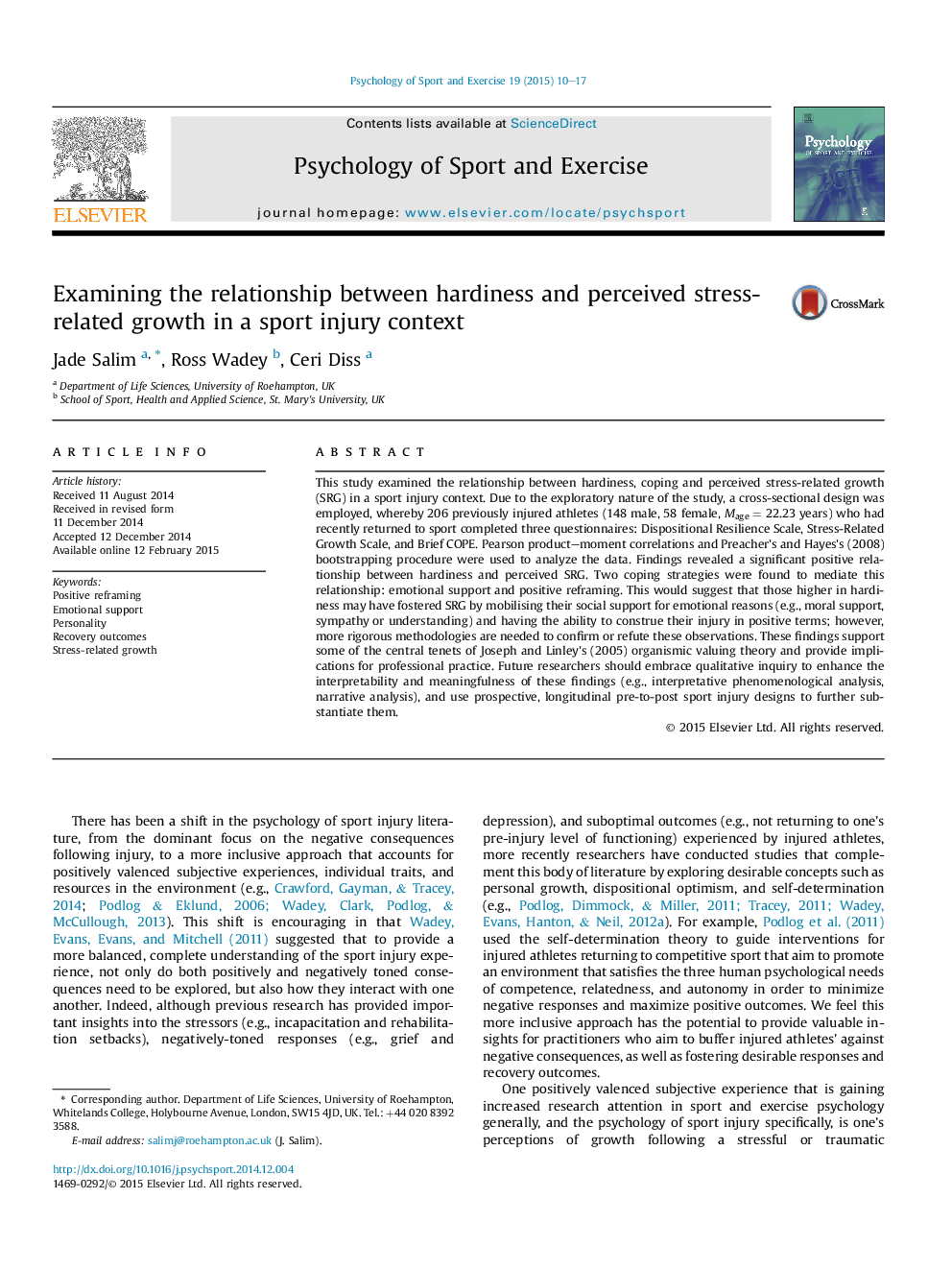| Article ID | Journal | Published Year | Pages | File Type |
|---|---|---|---|---|
| 894274 | Psychology of Sport and Exercise | 2015 | 8 Pages |
•We examined the relationship between hardiness, coping and perceived stress-related growth (SRG) in a sport injury context.•Findings revealed a significant positive relationship between hardiness and perceived SRG.•Two coping strategies were found to mediate this relationship: emotional support and positive reframing.•Findings support some of the central tenets of Joseph and Linley's (2005) organismic valuing theory.•Findings provide implications for professional practice.
This study examined the relationship between hardiness, coping and perceived stress-related growth (SRG) in a sport injury context. Due to the exploratory nature of the study, a cross-sectional design was employed, whereby 206 previously injured athletes (148 male, 58 female, Mage = 22.23 years) who had recently returned to sport completed three questionnaires: Dispositional Resilience Scale, Stress-Related Growth Scale, and Brief COPE. Pearson product–moment correlations and Preacher's and Hayes's (2008) bootstrapping procedure were used to analyze the data. Findings revealed a significant positive relationship between hardiness and perceived SRG. Two coping strategies were found to mediate this relationship: emotional support and positive reframing. This would suggest that those higher in hardiness may have fostered SRG by mobilising their social support for emotional reasons (e.g., moral support, sympathy or understanding) and having the ability to construe their injury in positive terms; however, more rigorous methodologies are needed to confirm or refute these observations. These findings support some of the central tenets of Joseph and Linley's (2005) organismic valuing theory and provide implications for professional practice. Future researchers should embrace qualitative inquiry to enhance the interpretability and meaningfulness of these findings (e.g., interpretative phenomenological analysis, narrative analysis), and use prospective, longitudinal pre-to-post sport injury designs to further substantiate them.
